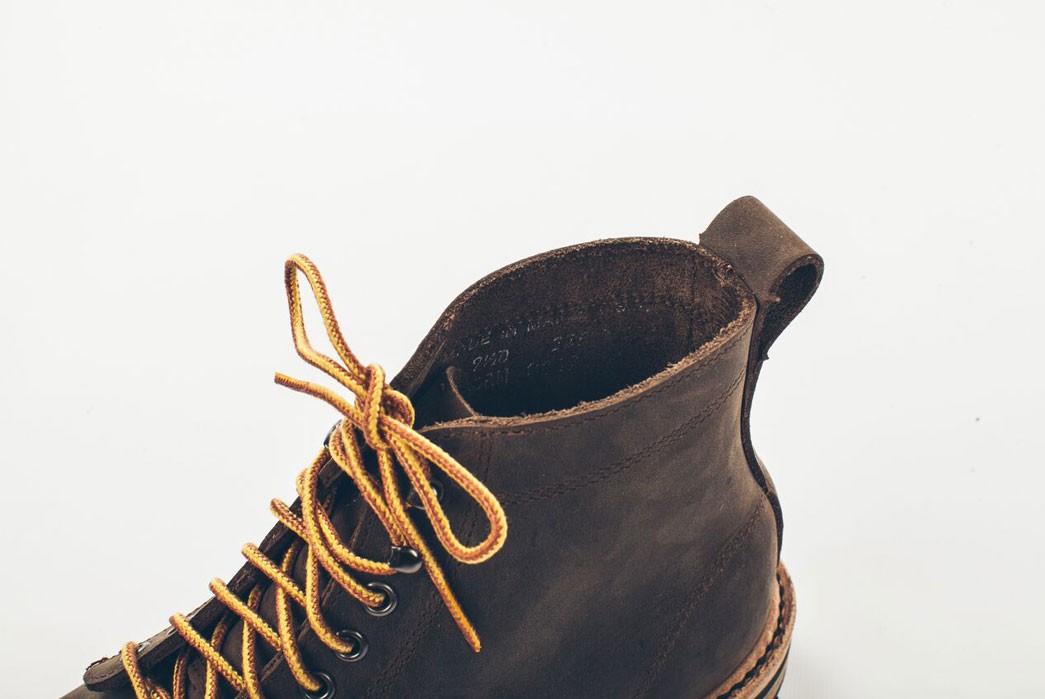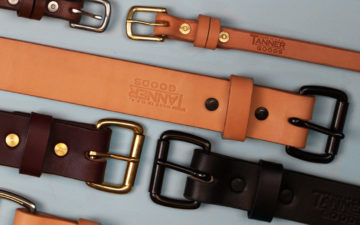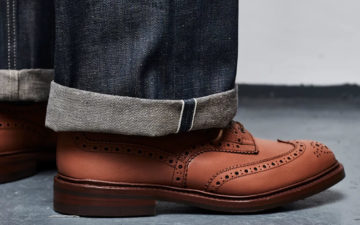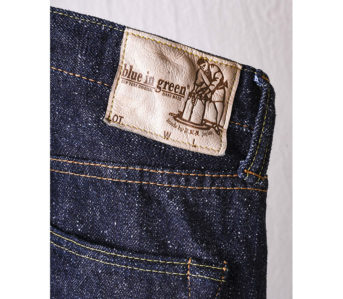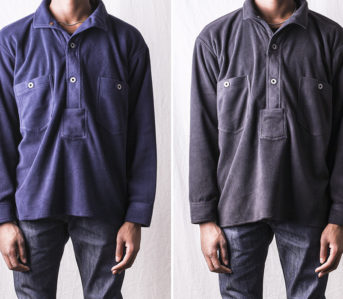So you think you know a lot about shoes, huh? Sure you may know the difference between a commando sole and a Christy wedge and yeah, you may even know the difference between stitch-down and Goodyear welted construction, but what do you know about shoelaces?
Yeah, you heard me right—shoelaces. You tie and untie them every day, but you probably don’t give them much thought. We mustn’t feel limited to the laces that come with our new shoes and we must be prepared for that terrible day when our laces inevitably break, usually at a very inconvenient juncture.
For these reasons, it’s a good idea to know a little bit more about the humble shoelace.
Rawhide
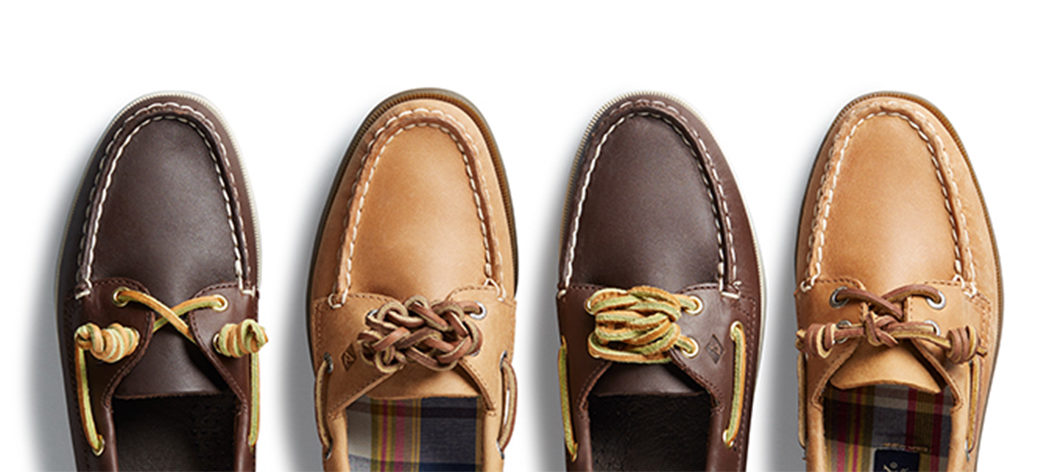
Image via Sperry.
You’ve definitely seen rawhide laces out in the wild and some of your shoes have probably come paired with them over the years. Rawhide is a leather that hasn’t been exposed to tanning–so therefore a literal raw hide.
Rawhide laces are typically paired with moccasins or boat shoes, like the Sperry Top-siders shown above. In terms of sheer durability, they’re hard to beat; but they’re certainly not the most refined option on the market.
A rawhide lace may never bust on you, but they’re not the easiest to tie. Less supple than most lace options, your knots inevitably come undone and don’t stay very low and close to the shoe. Strong, classic, and a great pairing for many outdoorsy shoe options, rawhide can be a bit of a hassle.
Flat Cotton
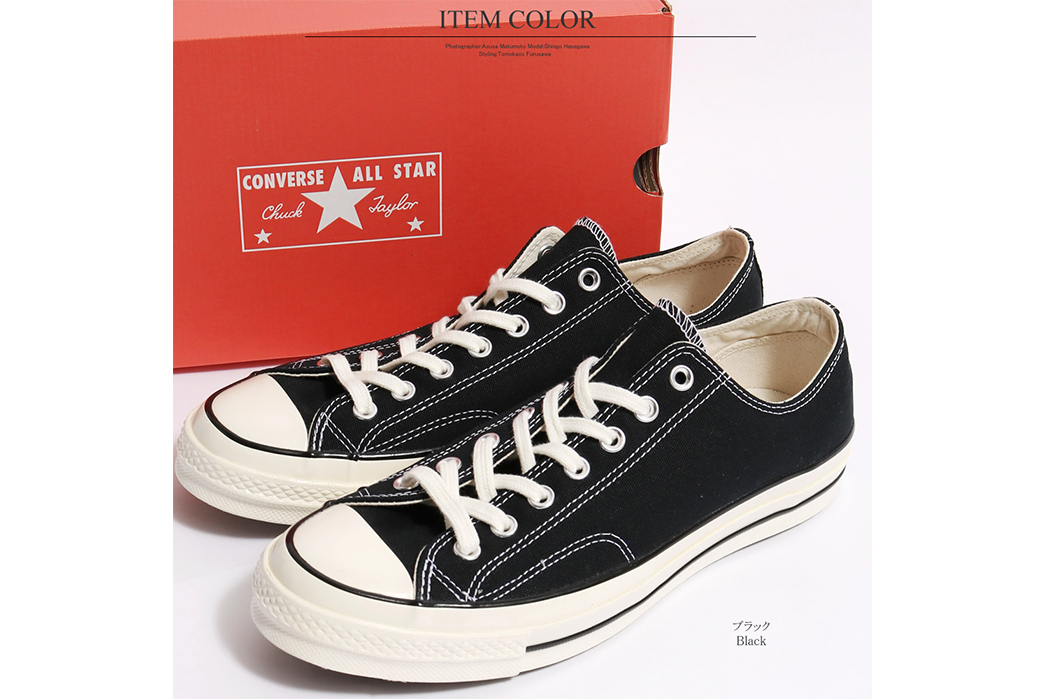
Chuck 70s. Image via Rakuten.
Growing up, the white laces on your favorite sneakers might have looked like cotton, but they were probably polyester. We all love 100% cotton here, so it’s no surprise that if you make the switch, you’ll instantly note the difference.
My first experience with this was moving from standard Converse to the Chuck Taylor 70s, whose overall vintage upgrade included all-cotton laces. There’s huge variance in quality, of course. Not all cotton laces match the quality of those used in these premium Converse. Cotton laces are cheap and easy to replace—and you’ll probably have to replace them at some point, especially if your sneakers are well-made and last longer than a year.
Cotton laces are also easy to clean, which is a god-send, considering how dirty sneakers can get. Just like with nicer cotton t-shirts, a better lace will have a fuller, fluffier look and considering that your sneakers are probably pretty nice, you may want to spring for better laces.
Round Cotton
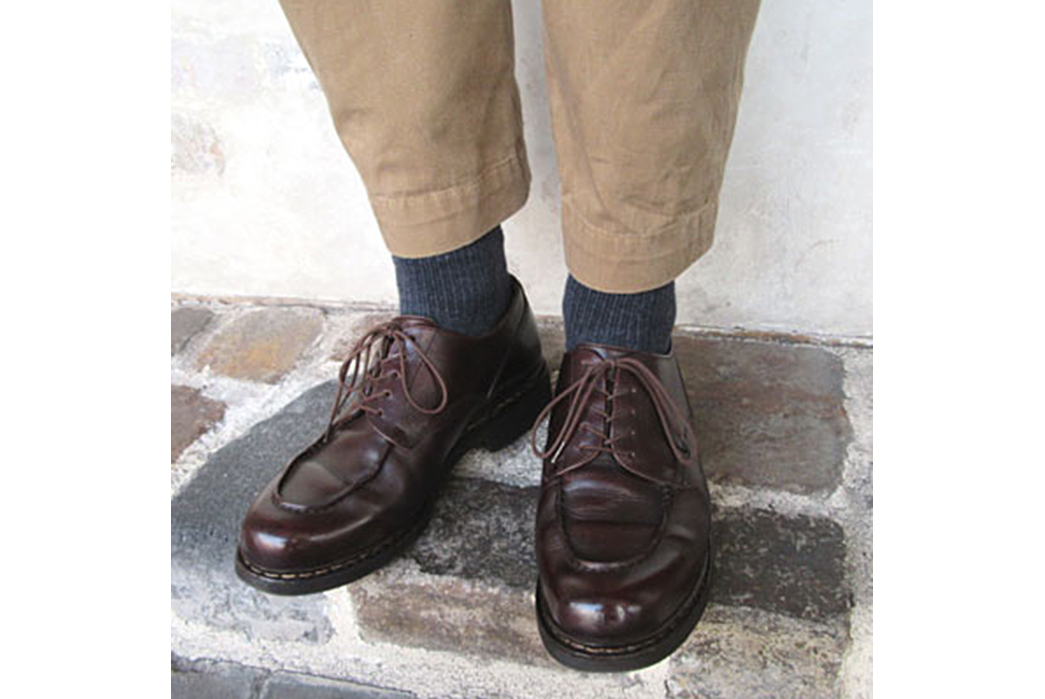
Round cotton laces on a pair of Paraboot Chambord. Image via Rakuten.
Many shoes use cotton laces, not just sneakers, but for a heavier-duty shoe, you need a heavier duty lace. Round cotton laces are more often seen in leather shoes, I tend to associate them with the dress shoes I was forced to wear as a kid, but they’re used all over.
Paraboot uses them, Viberg uses them, and these little laces tend to look almost like wire from a distance. They’re thin and though they may be brittle to start, they eventually settle and droop like laces ought.
Oftentimes they’re coated to give them a little extra strength, which they’ll need, especially if you want them to survive the break-in process on your cool new derbies or oxfords. You’ll sometimes see them on dressier boots too.
Flat Waxed
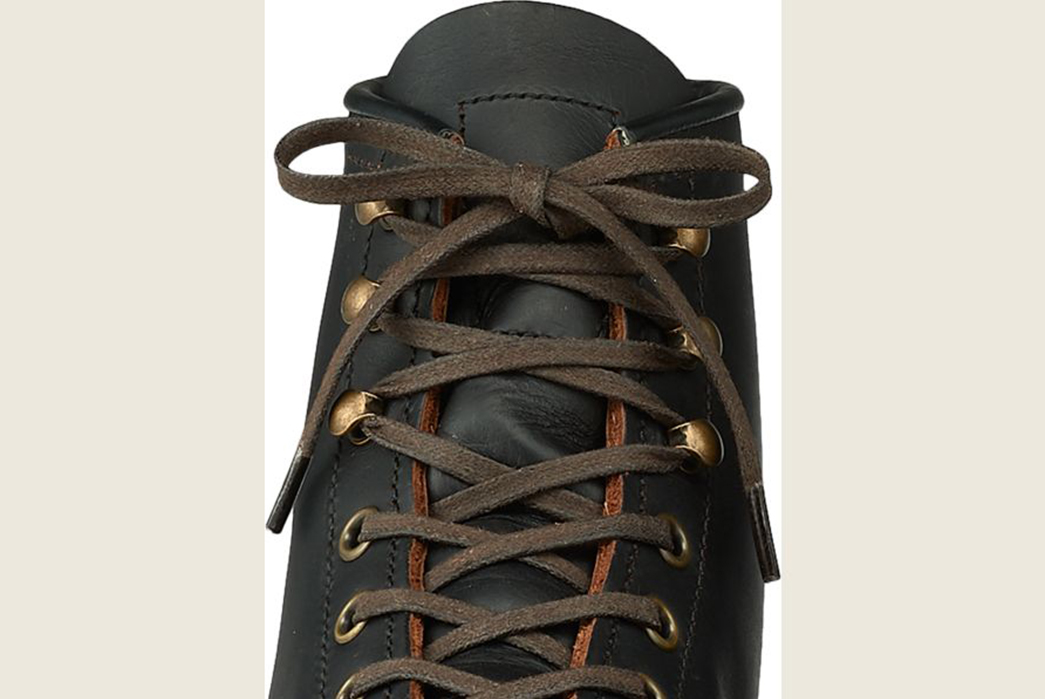
Image via Red Wing Heritage.
Most often seen on Service Boots, flat waxed laces are extremely popular. And for good reason! Despite the weird tacky residue they leave on your hands, they strengthen your laces and ensure they’ll stand up to the elements just as well as your new all-purpose boots.
With heavy-duty boots, a regular flat cotton lace might not hold up, the waxing however; guarantees a degree of strength you wouldn’t otherwise see. The wax can make the laces feel a bit brittle, which sometimes makes them annoying to tie and untie, but they certainly do their job.
A service boot is designed to protect your feet in the most strenuous circumstances—and a serious waxing will do the same for your laces.
Braided Nylon
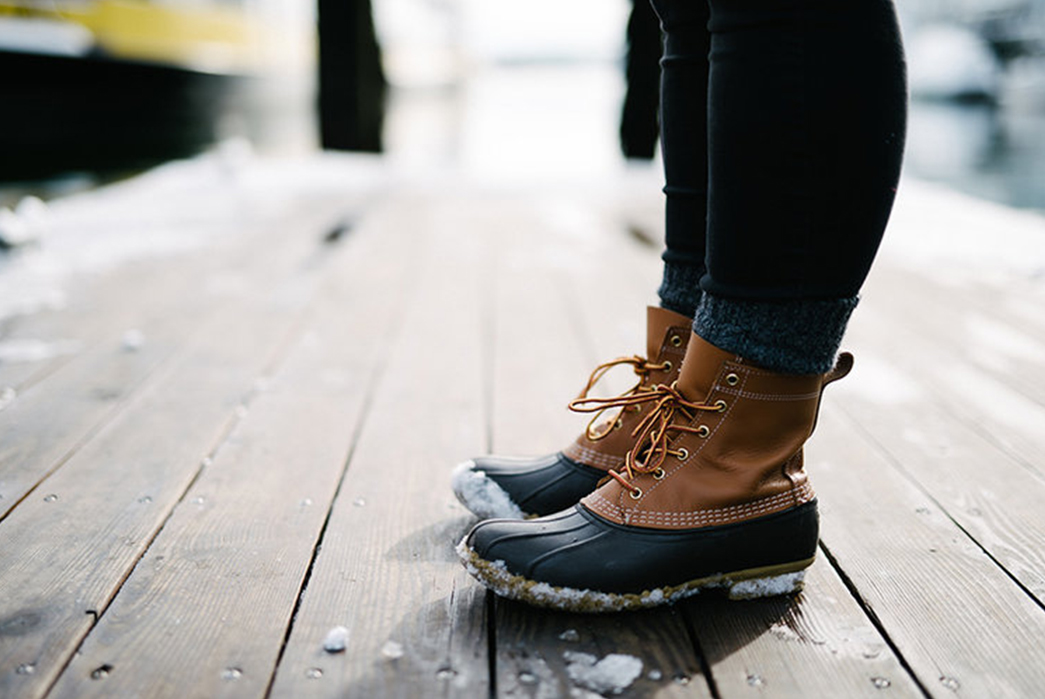
Nylon laces on Bean Boots. Image via FindYourBoots.com
The iconic yellow and brown braided laces on the famous L.L. Bean Duck Boots are made of—guess what! Braided Nylon.
Braided nylon is super strong and is typically used for boots that are going to take a serious beating. Serious hiking boots, snow boots, and even boots worn by the military all employ these extra-strong laces.
Braided nylon laces are typically thicker, which means they won’t tangle all too easily and you should have a pretty easy time lacing them up, even when you’re wearing gloves and freezing your fingers off.
Nylon is highly water and weather-resistant and is be a better choice than a waxed cotton, even though the latter can look a bit cooler. Resilient, pragmatic, and tactical, a great choice for people who are actually getting outside and doing something—not just wading into the snow in Williamsburg to bum a Parliament.
Paracord
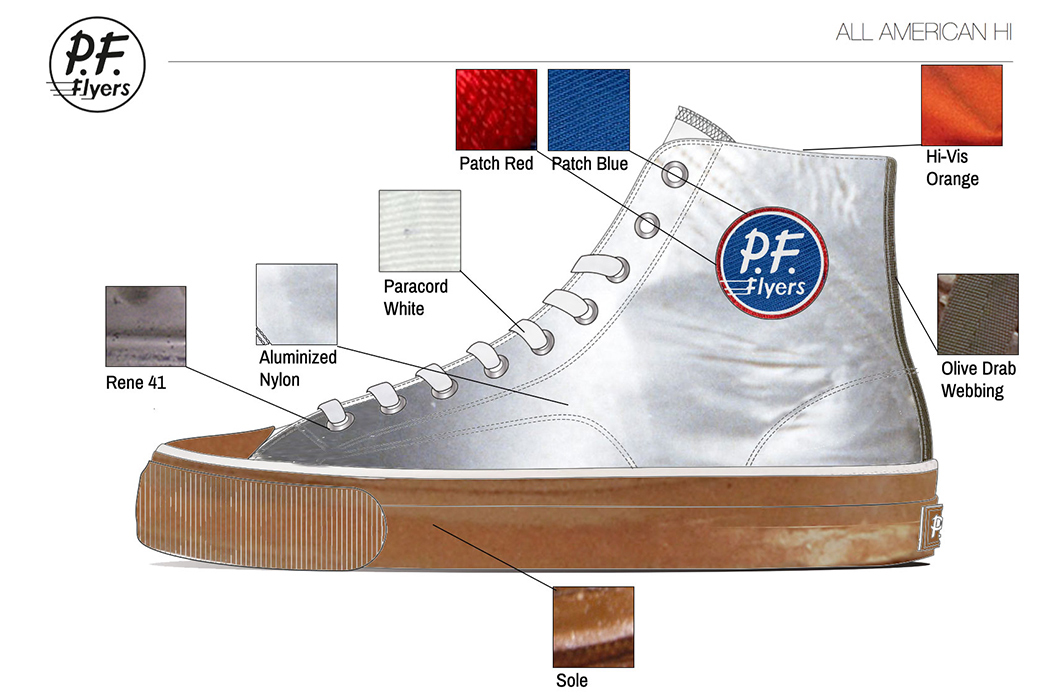
Our shoe! Image via Heddels
Not to make this about us or anything, but how many times have you seen paracord used as laces? With all the virtues of the braided nylon lace (paracord uses a nylon sheath) but even more strength, paracord laces might just be your forever laces.
Paracord has a super strong inner core and can hold up to 550lbs, which is important because paracord was used to suspend paratroopers from their parachutes as early as WWII. Water and mold-resistant and just dumb strong, paracord might be like bringing a bazooka to a knife fight, but whatever it takes to keep your shoes tied, right?

